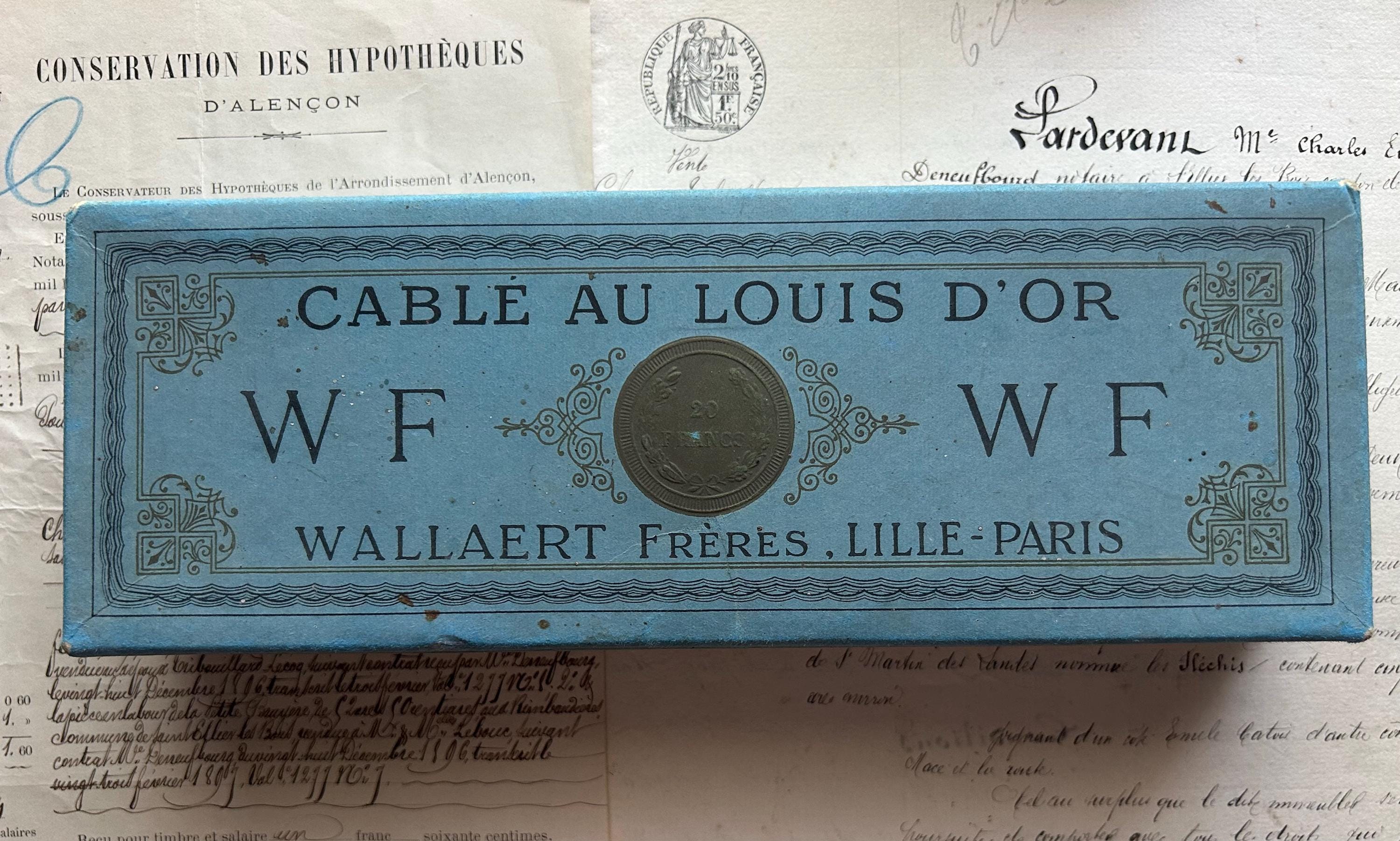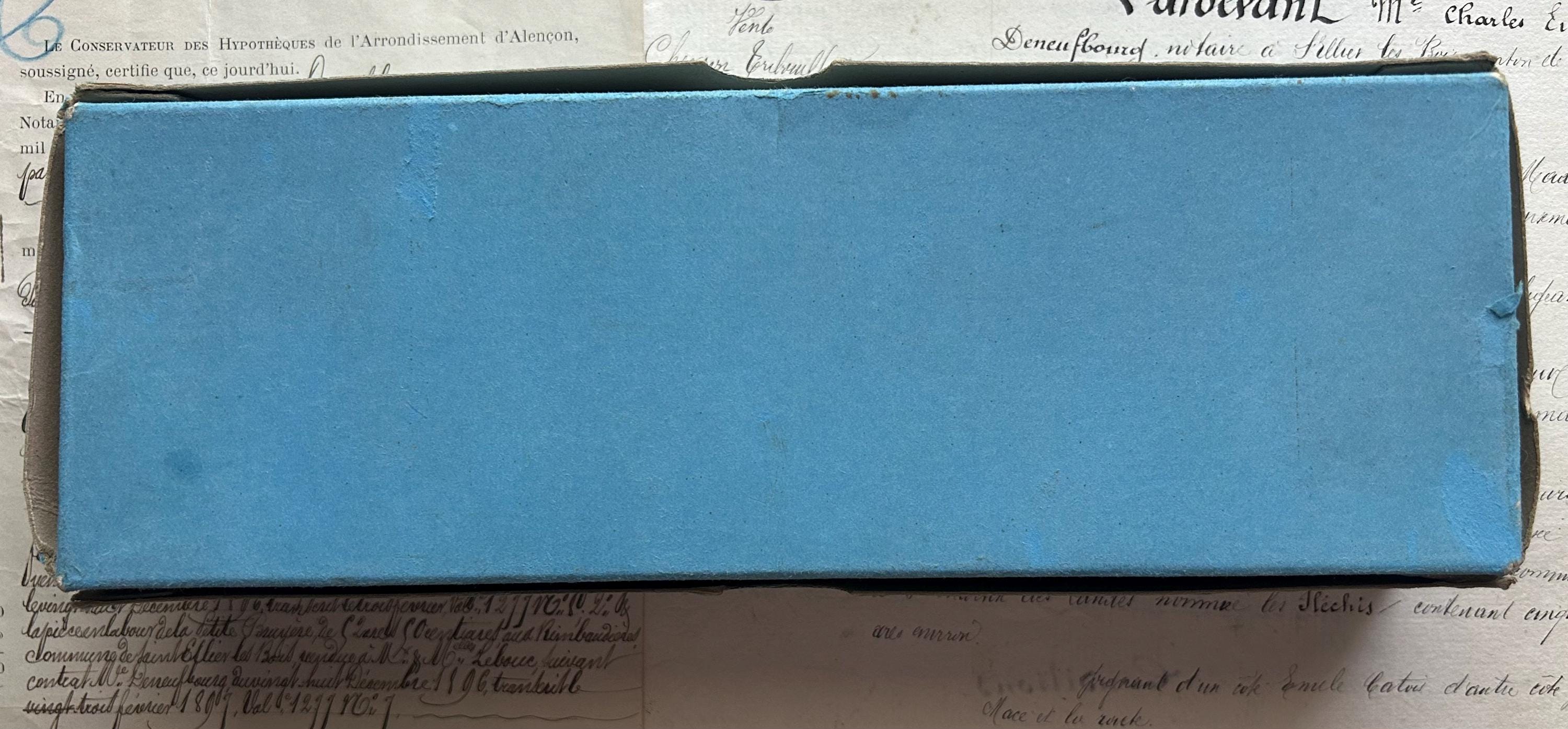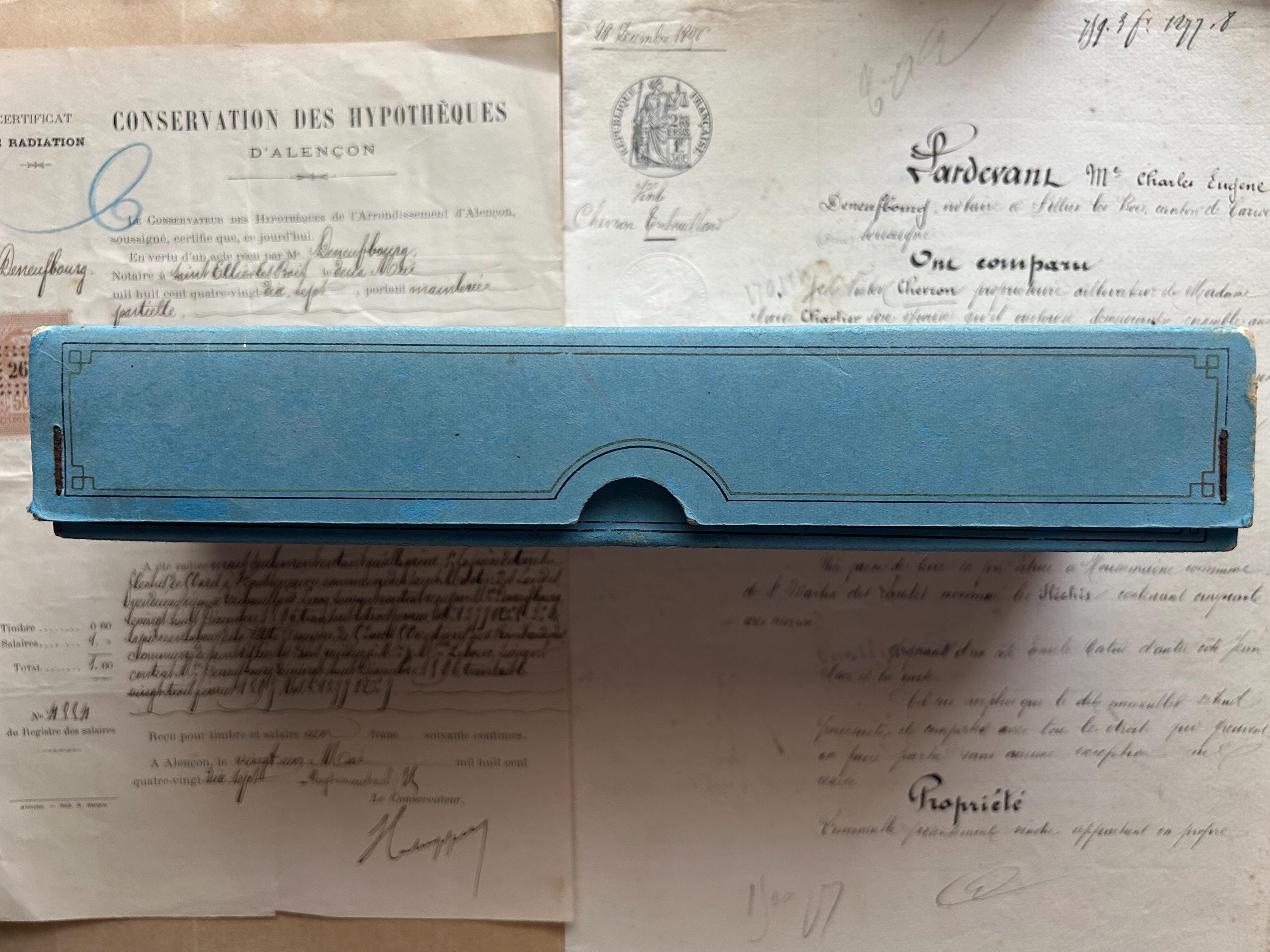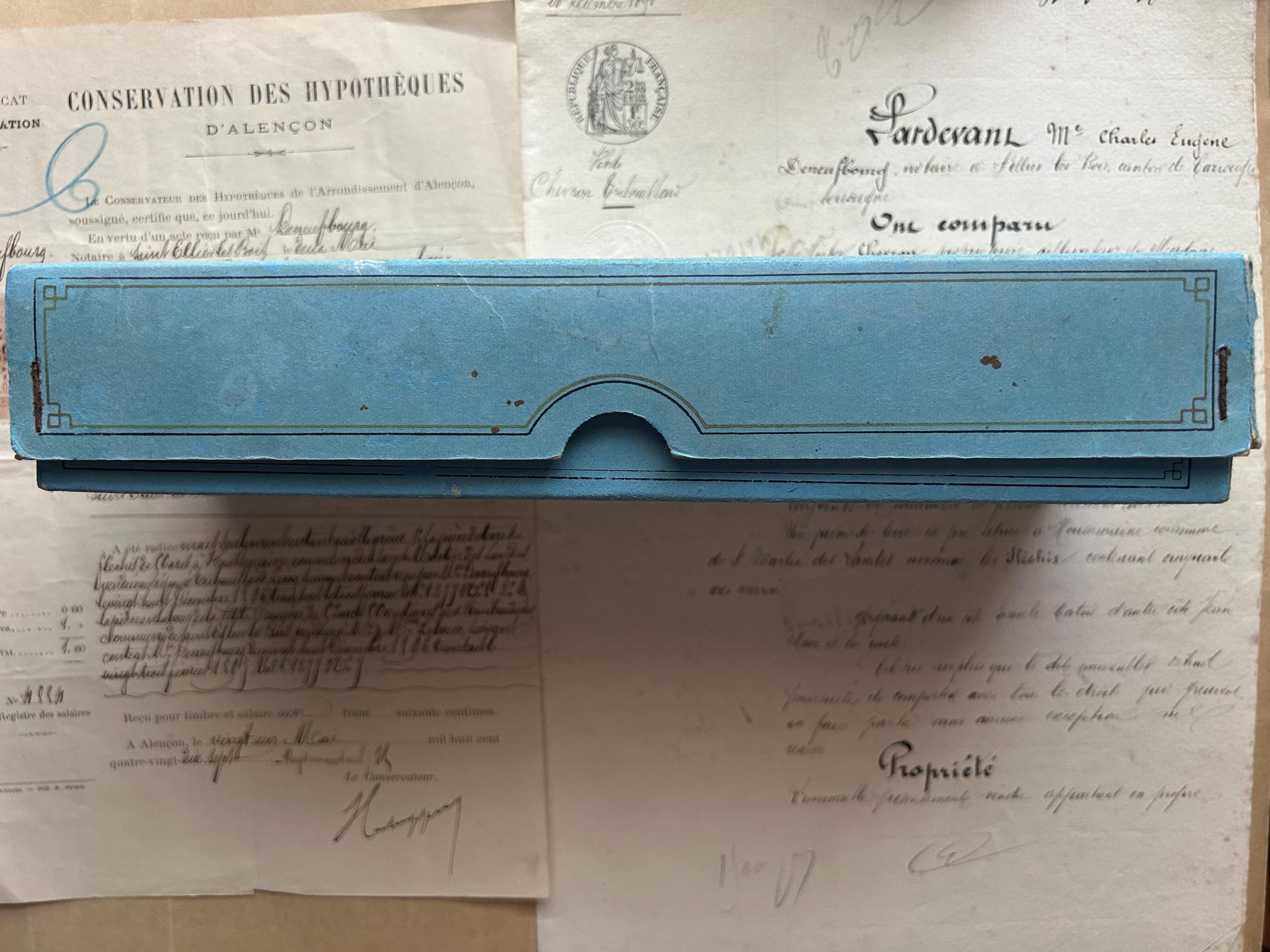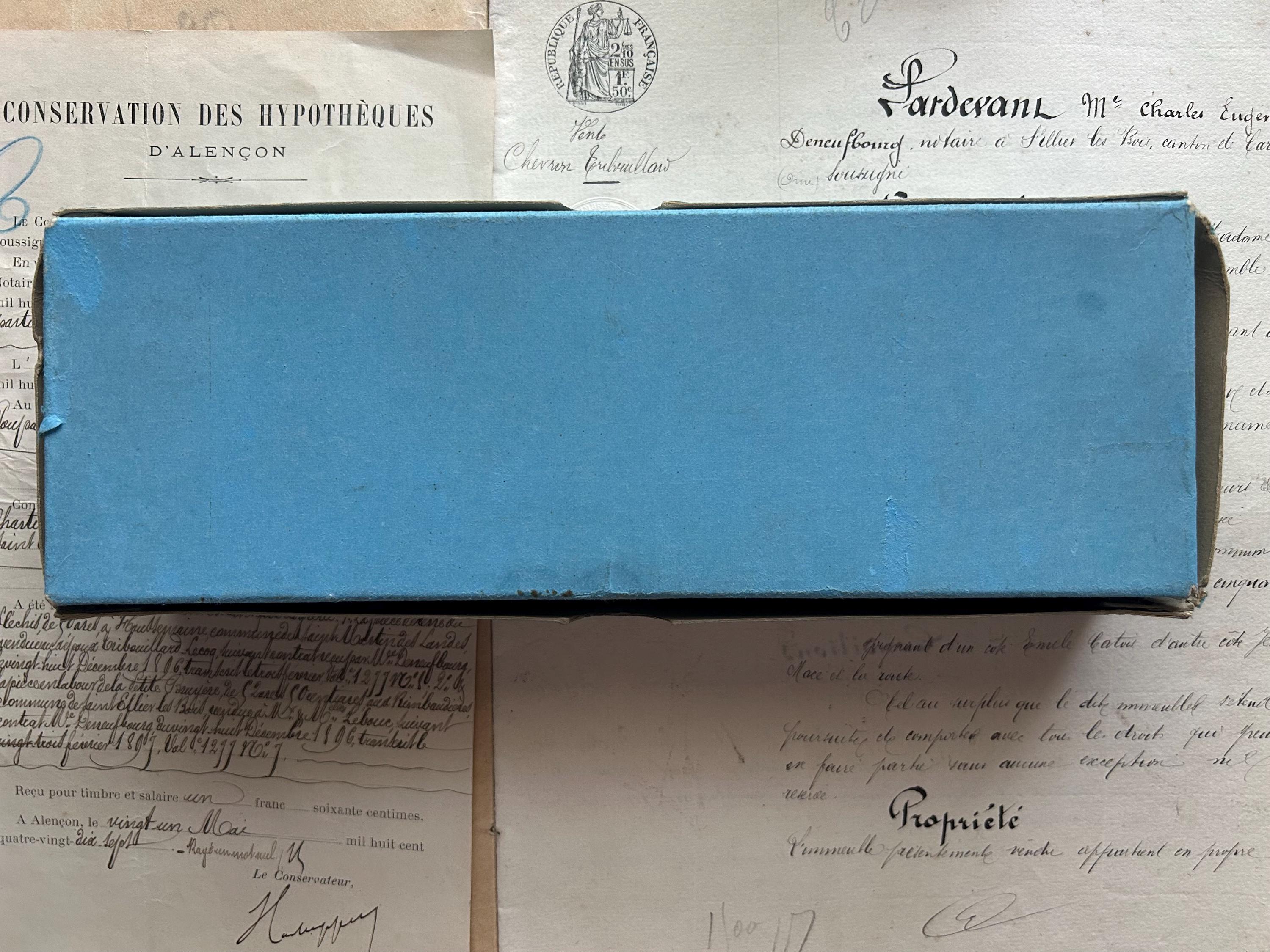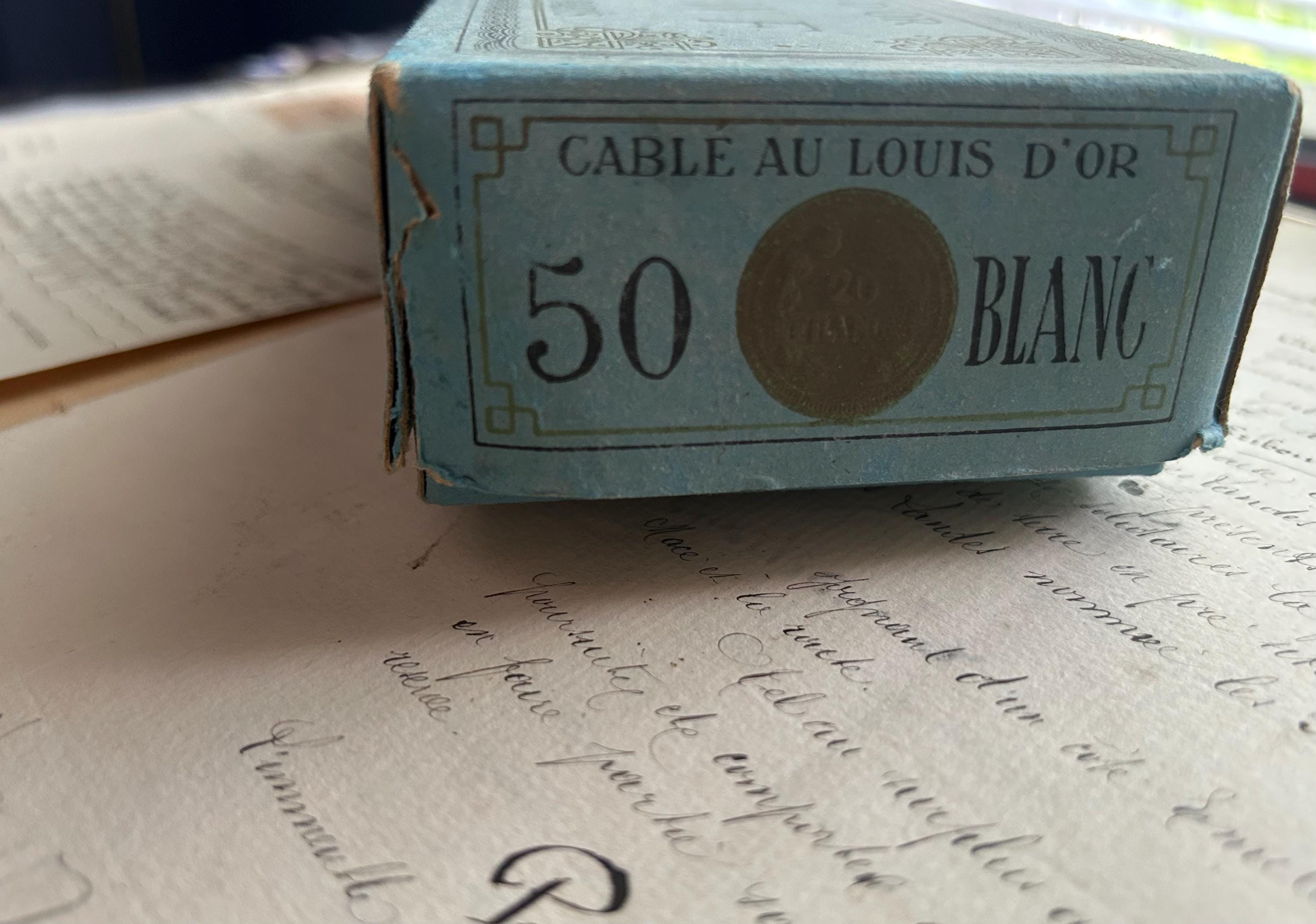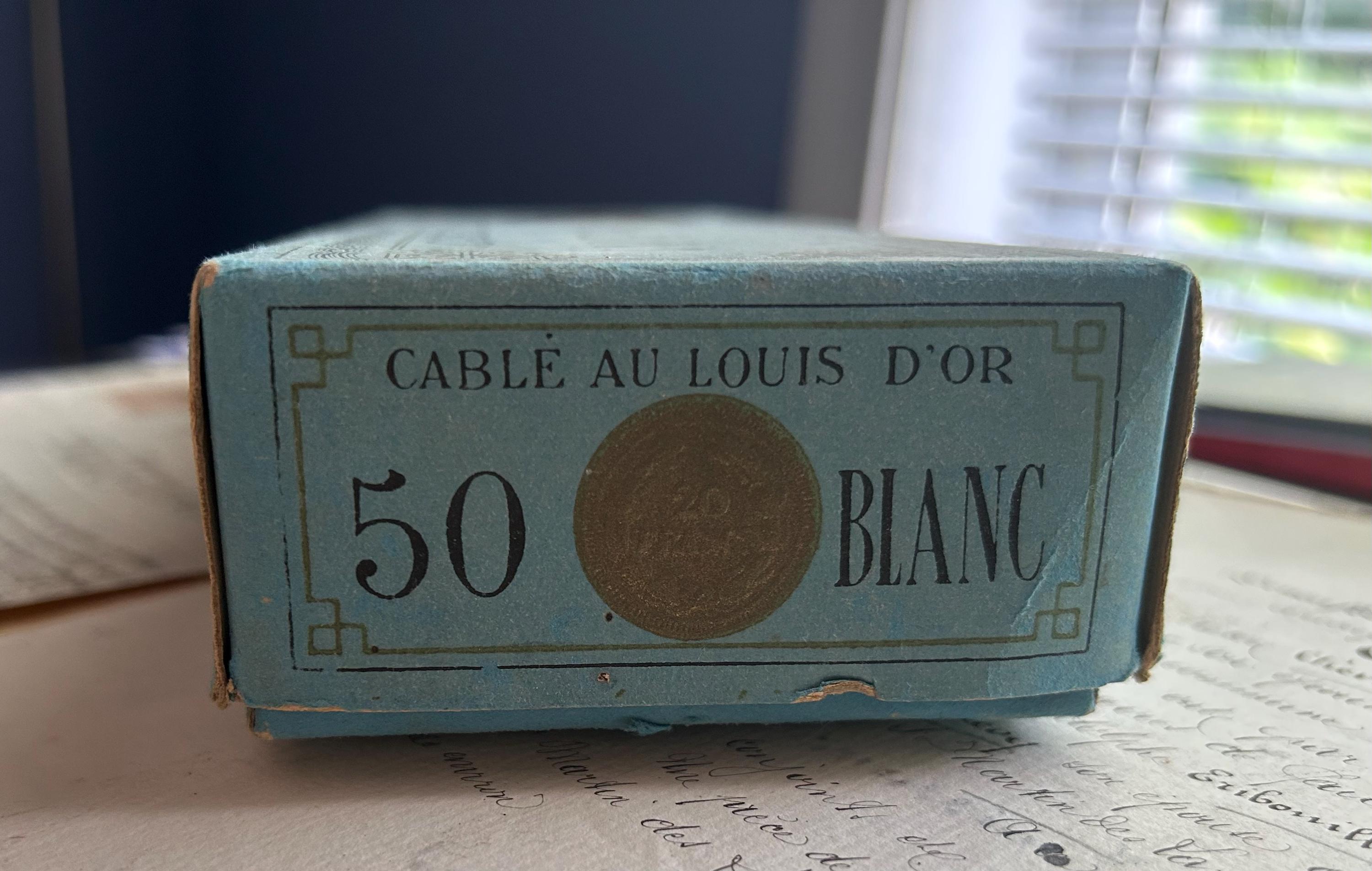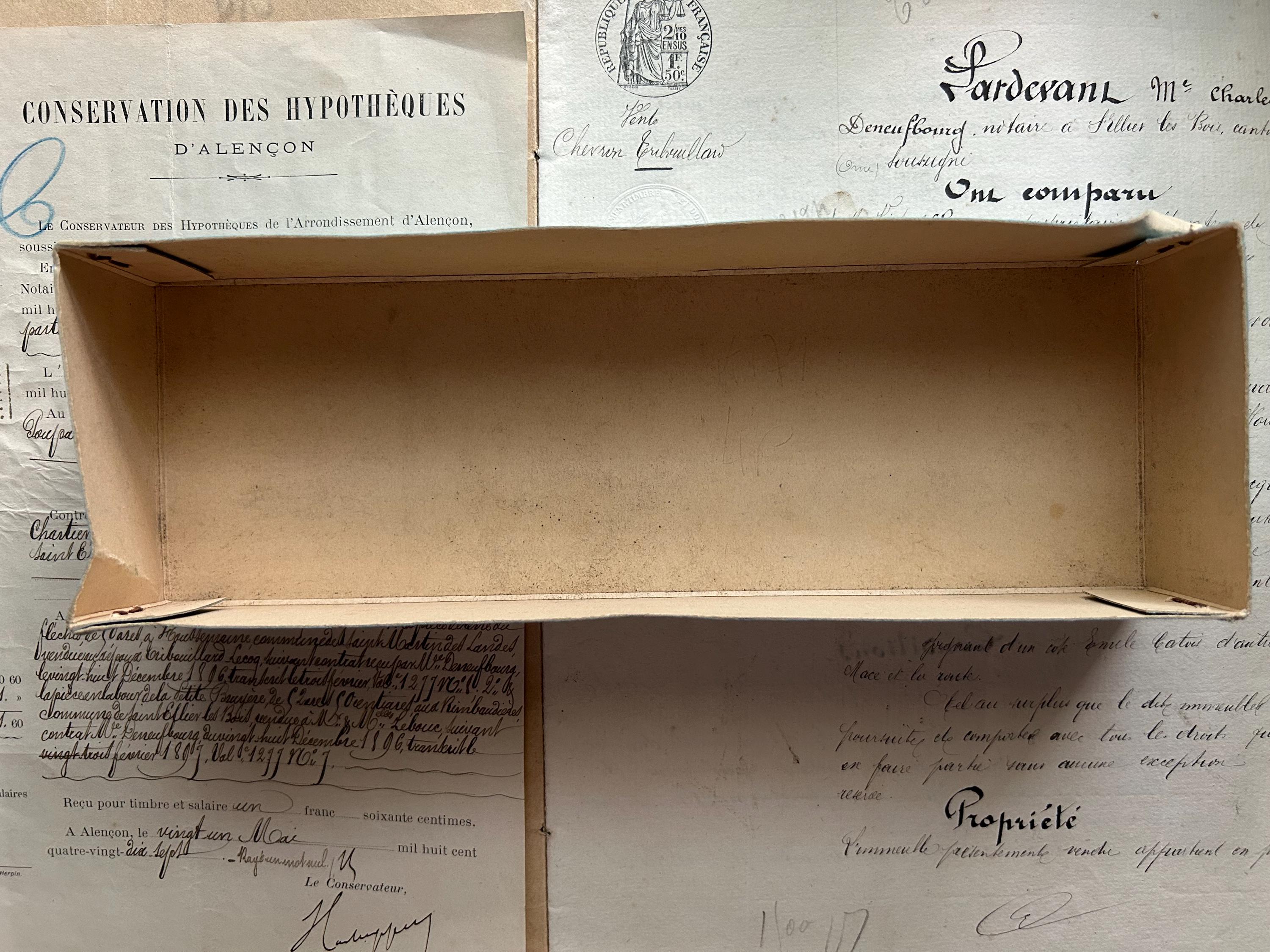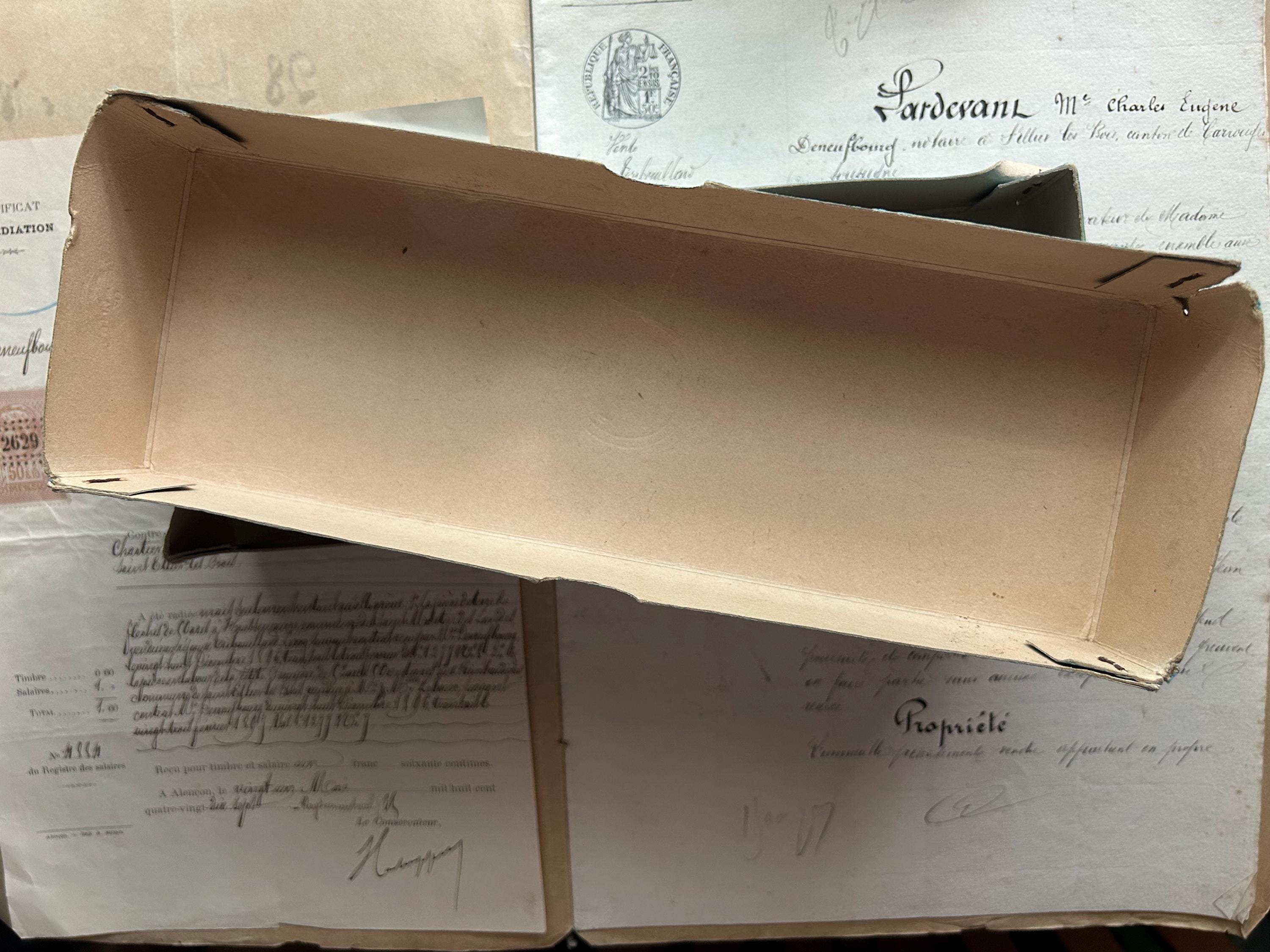*****Please read the entire description and examine the photos with the zoom function. The box has numerous condition issues in the way of staining, discoloration, tearing, paper loss, creasing, and general overall wear.
This cardboard box (dimensions: 9.5 x 3.25 x 1.75) once held white Louis d'Or thread from Wallaert Frères. I estimate its age to be early 1900s. Since this is just an estimate, I have left the designated age of the box as vintage.
*****Condition: Please examine the photos closely and do let me know if you need more as I'll be happy to oblige. The lid of the box has some discoloration/staining and creasing. Also, there is loss to the gold color of the franc piece in the box's center. The underside of the box has some discoloration/staining as well as creasing and some paper loss. The two sides and two ends of the box have discoloration and creasing. Finally, the seventh and eight photos show tearing, edge wear and creasing to the ends.
Thank you to https://www.thiriez.org/filaturesOZ/wallaert.htm for the following, valuable information on Wallaert Frères:
Originally from the Kortrijk region of Belgium, the members of the Wallaert family (pronounced [walar]) were pioneers of the linen and cotton industry in Lille. François Wallaert, from a wealthy farming family in the Kortrijk region, arrived in Lille in 1747, became a grocer, and then married the daughter of a master spinner. He entered an apprenticeship in this guild. Of his three sons, the second, Jean-Baptiste (1772-1858), became a cotton spinner.
*In 1815, Auguste Wallaert-Mille (1798-1865), son of Jean-Baptiste, founded the first cotton spinning mill, Ets WALLAERT, in Lille.
Brands: Au Louis d'Or, A La Chapelle
*In 1832, the powerful WALLAERT spinning mill was already equipped with steam engines, while Ets THIRIEZ was not yet.
*In 1842, Auguste joined forces with his brother Achille Wallaert-Crépy (1801-1872) and founded a linen spinning mill.
*In 1844, a flax and tow mill was founded. In 1862, Auguste-César Wallaert-Descamps (1830-1899), son of Achille, joined forces with his father and uncle to found a linen weaving mill in Lille and a linen laundry in Santes.
*In 1884, the company name WALLAERT FRERES was established.
*In 1866, a large cotton mill with 30,000 spindles was founded on Rue de Fontenoy in Lille, in partnership with his brothers Émile and Édouard, and his first cousin Achille Wallaert. A small cotton mill was also founded in Santes.
Thus, the Wallaerts were at the head of a veritable "textile empire" at the end of the Second Empire. The beautiful mansion built by Achille Wallaert-Crépy can still be admired in Lille, at 83 Rue Royale.
*1867, Paris Exposition, Gold Medal
*In 1869, the elder branch (Wallaert-Mille), which acquired the cotton business, split from the younger branch (Wallaert-Crépy), which acquired the linen business. The linen business passed to the Le Blan family. 1878, Paris Exposition, gold medal recall
*1883, Amsterdam Exposition, gold medal
*1889, Paris Exposition, hors concours, member of the jury of class 30
*1900, Paris Exposition, 2 grand prizes
*1910, Ets WALLAERT, 2,700 workers, not including managers, employees, and representatives, had 3 cotton spinning mills (100,000 spindles), a twisting mill (75,000 spindles), and linen production
*1914, the Wallaert and Le Blan spinning mills were partially burned down
*1916, what remained of the factories was completely destroyed on the night of January 11th during the explosion of the Dix-huit ponts munitions depot
*1918, since the end of the war, with traditional outlets for thread and table linens in Argentina (sales house in Buenos Aires) and Indochina, the Wallaert firm experienced increasing difficulties.
*1950-1960, shift towards synthetic fibers.
*1966-1967, merger with the Fremaux group (table linens), all thread activities were transferred to Santes.
*1971, absorption of WALLAERT FRERES by D.M.C. (Dollfus Mieg & Cie), then managed by the Thiriez family.
WALLAERT then accounted for a quarter of the national market in industrial sewing threads and employed 1,178 people. It also established a plastic injection mold manufacturing unit in Belgium, which would supply the bobbin manufacturing workshop in Loos.
*1981, Transfer by D.M.C. of the Wallaert Frères spinning mill to Le Blan & Cie, which was liquidated in 1989.
*****Please read the entire description and examine the photos with the zoom function. The box has numerous condition issues in the way of staining, discoloration, tearing, paper loss, creasing, and general overall wear.
Thank you for looking.
Returns & Exchanges
I gladly accept returns, exchanges, and cancellations
Just contact me within: 3 days of delivery
Ship items back to me within: 7 days of delivery
Questions about your order?
Please contact me if you have any problems with your order.
